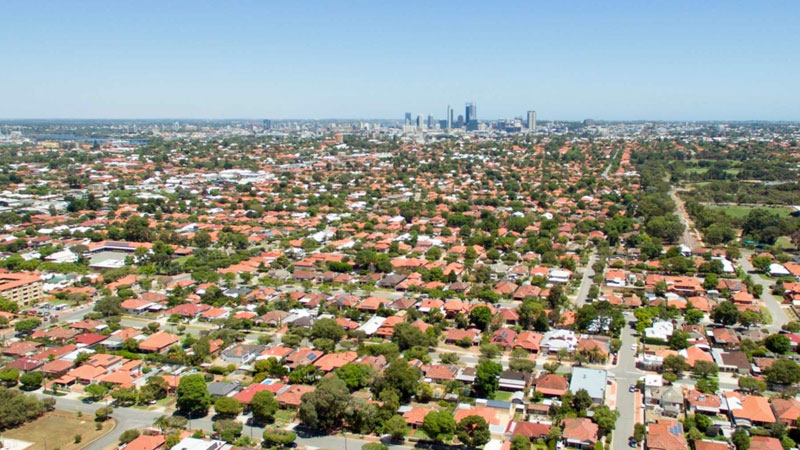Resources
Newsletter
Stay up to date and with the latest news, projects, deals and features.
SubscribeAustralia’s house prices have set a 32-year record for growth, according to Corelogic’s monthly housing data.
The growth in national dwelling values has hit its highest point since June 1989, 22.4 per cent, with the average house now worth $131,236 more than it was a year ago.
Brisbane and Adelaide lead in the increase in house values at 2.3 per cent and 2.2 per cent respectively with Hobart at 1.2 per cent. Sydney and Perth reported growth of 0.6 per cent, Darwin 0.5 per cent and Melbourne 0.2 per cent.
“Record low interest rates, elevated household savings, strong interstate migration, better relative affordability, limited detached housing supply, fewer Covid disruptions, solid government infrastructure spending and a tight rental market are all supporting home price appreciation in both Brisbane and Adelaide,” CommSec’s senior economist Ryan Felsman said.
And it has again been the regions leading the way. The combined regionals index increased by 1.8 per cent in January and 6.3 per cent over the rolling quarter.
Despite rising house prices in Brisbane and Adelaide, the combined cities index only increased by 0.8 per cent in January and by 2.6 per cent over the rolling quarter.
The difference between the two of 3.7 percentage points is an all-time high.
Change in dwelling values
| City | Annual | Houses median value | Units median value |
|---|---|---|---|
| Sydney | 25.3% | $1,374,970 | $835,104 |
| Melbourne | 15.1% | $997,928 | $627,047 |
| Brisbane | 27.4% | $782,967 | $451,258 |
| Adelaide | 23.2% | $622,155 | $386,420 |
| Perth | 13.1% | $533,013 | $400,711 |
| Hobart | 28.1% | $747,187 | $563,628 |
| Darwin | 14.7% | $565,080 | $368,847 |
| Canberra | 24.9% | $1,015,900 | $584,100 |
| National | 22.1% | $766,377 | $602,933 |
^Source: Corelogic
Every state reported a minimum increase of 1.2 per cent in regional housing values with regional Queensland (2 per cent) and regional South Australia (2.1 per cent) topping the list.
This has been an ongoing trend during the past year as more people move from the cities to regional areas, particularly those with good commuter networks.
“Regional dwelling price growth slowed slightly but to a still very strong 1.8 per cent month-on-month for January, reflecting ongoing demand for regional property on the back of coronavirus and the working from home phenomenon, which has all seen a refocus on quality-of-life considerations,” AMP’s head of investment strategy and chief economist Shane Oliver said.
Commutable markets such as the Southern Highlands and Shoalhaven, Sunshine Coast and the Hunter Valley (excluding Newcastle) experienced growth of 37.6 per cent, 34.4 per cent and 34 per cent respectively.
Other regional markets are also climbing the housing value ranks.
However, growth was varied across the country with Brisbane and Adelaide showing consistent growth month to month while other cities were slowing down.
“A pick-up in listings, affordability constraints, government virus restrictions, rising fixed mortgage interest rates and new regulatory measures to tighten serviceability requirements for new mortgages have all slowed price momentum,” Felsman said.

Western Australia’s border closures look to be be contributing to Perth’s slower conditions and uptick in rental yield, whilen Brisbane and Adelaide the supply of housing is still low but demand remains high especially in south-east Queensland.
Nationally, the growth in house prices continues to outpace unit prices nationally by 1.3 per cent to 0.3 per cent in January.
Gross rental yields have also increased more in the regional areas than in the cities with the regional Northern Territory reporting a growth of 6.9 per cent and regional Western Australia 6 per cent.
Gross rental yields in the cities saw Darwin reporting a 6.1 per cent growth and Perth 4.4 per cent.
This reflects more people opting to rent in these areas where the rental prices were lower—Darwin’s rental price grew by just 0.2 per cent and Perth’s by 1.4 per cent while Brisbane and the ACT had the highest rental price increases at 2.3 per cent.
The changing nature of work and ongoing pandemic restrictions appear set to continue to affect property markets and current trends.
“Of course, the full re-opening of Australia’s international border could yet influence demand for Aussie homes, while a potential reversal of capital city to regional Australia migration—as workers look to return to city offices in either a part-time or full-time capacity—is another interesting dynamic which could also impact regional property markets in 2022,” Felsman said.
“In the near-term, homebuyers, investors and sellers should be on the lookout for signs of property market weakness, including weaker auction clearance rates; lifting advertised stock levels; a lengthening in days a home is advertised on the market; and increased levels of home price discounting.”.